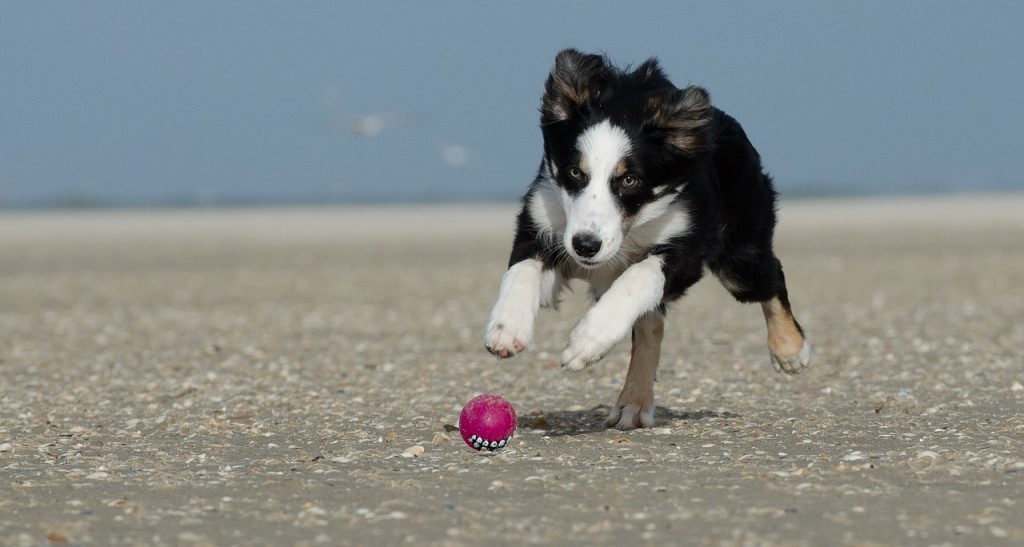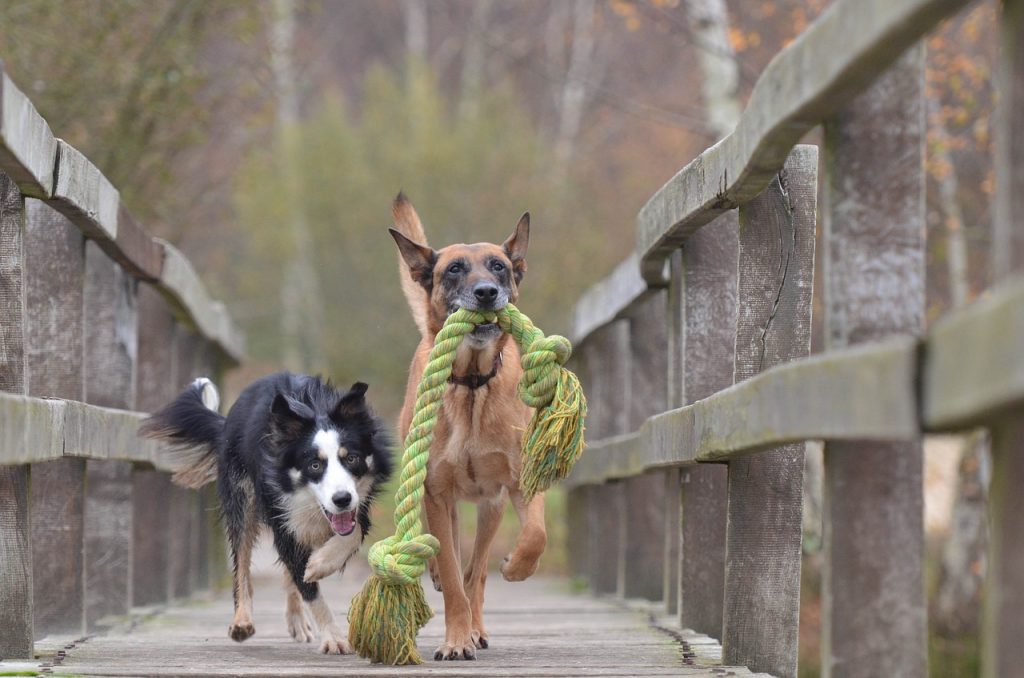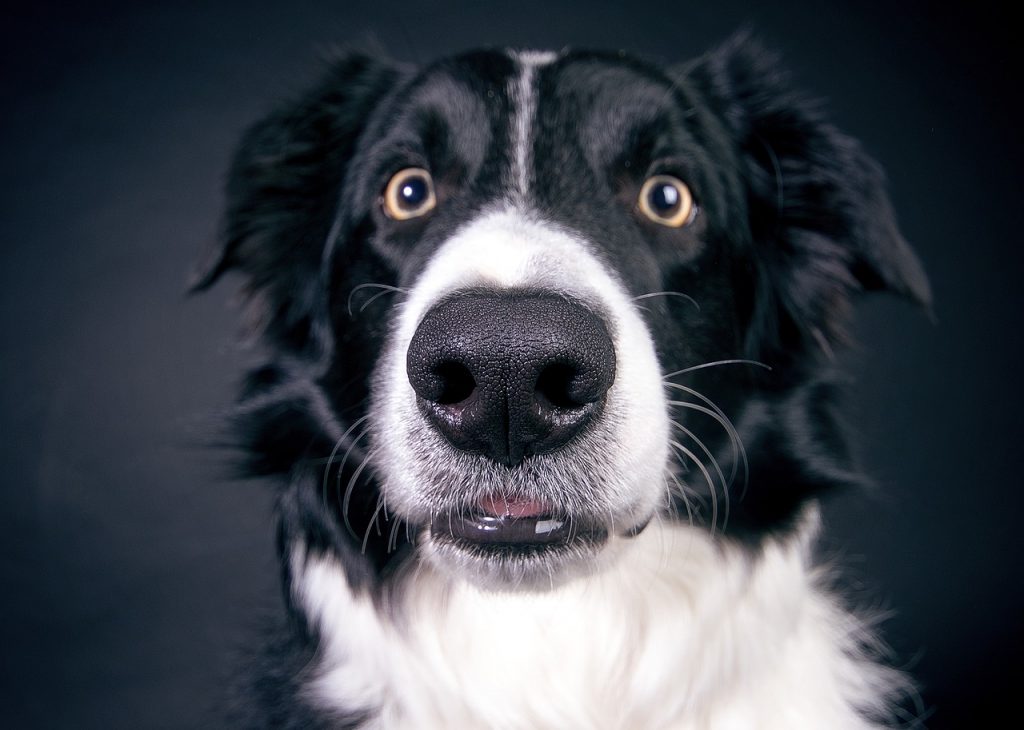Back injuries were reported as the second most common injury in agility dogs (behind shoulder injuries) and accounted for 18% of all agility injuries. But why do agility dogs get back injuries?
This article explores factors that may increase the risk of not only back injuries, but also any musculoskeletal injury. While agility dogs are the focus, the information can also be applied to any sporting or performance dog.
Starting Dog Agility Too Early
You’ve got a new puppy and all you want to do is start training them to become the next agility superstar. That sounds like an excellent idea but you need to understand that your puppies bones and joints are still growing. Doing too much too early can increase the risk of injuries, including a sore back.
This doesn’t mean that you can’t start training your puppy before they reach skeletal maturity (~12-18 months old). But you need to ensure the amount and type of exercise is appropriate for your puppies age.
Growth Plates
Growth plates are soft areas of developing cartilage found primarily at the end of long bones. As your puppy grows, their growth plates close and harden into solid bone. Before closure however, their growth plates are vulnerable to injury.

In an adult dog, if a joint experiences a stress such as bending the wrong way or rotating too much, the bones are strong enough to withstand the forces. In a puppy, however, their muscles, ligaments and tendons are stronger than the growth plates in the bones. This can lead to a growth plate injury.
An injury to a growth plate can affect bone growth, leading to misshapen or shortened bones. This can then lead to changes in joint angles, which can make your puppy more prone to injuries when they’re older.
While most growth plates have closed by 12 months of age, some take longer. 18 months old is considered a safe age to ensure your puppies growth plates have closed.
Safe Puppy Exercise to Help Reduce Back Injuries
Age appropriate exercise is an important component of puppy growth. Exercises may include:
- Balance and body awareness: develops awareness of where body parts are in space e.g. rear end awareness, different surfaces
- Skill training: how to learn, safe play, basic obedience
- Strength: Build strong muscles to support the joints e.g. core strengthening
- Endurance: increase heart and lung conditioning so that intense activity can be maintained over time.
The following guidelines are an excellent resource outlining the various stages of growth, and what kind of exercise is safe.

Good Core Strength
Good core strength is of upmost importance for reducing the risk of a back injury in an agility dog. The core works as a muscular support for the spine and pelvis. When your dog twists and turns around corners and over jumps, and changes speed / direction, the core muscles are what keep the spine safe. These muscles stop the spine from rotating too much or hyper-extending.

Signs of a Weak Core include:
- Poor posture, such as sagging through the top line
- Difficulty transitioning from positions such as sitting to standing
- Inability to hold a sit or stand over time
- Poor pelvic / thoracic control on balance exercises e.g. weight shift on three leg stand
- Excessive spinal extension (sway) or rotation during rear end movement
While these signs may be more obvious in deconditioned dogs, subtle deficiencies may exist in an agility dog.
If you would like to learn more about core strengthening please check out Dave Munnings videos on core strengthening in this article.
Improving Technique
When trying to keep the back safe, the most important technical factor is limiting excessive spinal range of motion, especially at the transition points (thoracolumbar spine and lumbosacral spine). Good technique along with a strong core will make sure that no one area of the spine has too much force going through it. While this may not prevent back injury in its entirety, it will go along way to minimizing risk.
Remember back injuries were the second most common injury in dog agility, with injuries most commonly occurring on the A frame (source). The primary risk on the A frame is the rapid change in direction and speed as the dog goes over the top of the A frame before decelerating for the contacts.
In this video you’ll see an example of an agility dog at risk of a back injury if they were allowed to continue performing the A frame without both technical correction and core strengthening. Dave Munnings of Q-Me Agility has done an excellent job of improving the technique, with further improvements an ongoing process. While this is an obvious example, even subtle issues performed over and over again can lead to a back injury and pain.
This same example can be applied to turns and jumps. If your dog is at the end of their available spinal range of motion (in one or several segments) when turning or jumping, and they slip or miscalculate, there is no safety net. They’re already at the end of their available range of motion. This miscalculation takes them into a position past their safe range of motion, and may lead to excessive strain through one of the spinal joints, most commonly the transitional areas. Now while this may not cause an acute injury right there, have this happen enough times and it will likely lead to a back injury.
In contrast, if a dog has good technique and core strength, the forces through their spine are evenly spread with no one spinal joint at the end of its available range of motion. If this dog slips or miscalculates as they round a corner or land from a jump, they still have range of motion (and strength) available to keep them safe.
An experienced agility trainer with a good eye for technique and lines can be invaluable in identifying technical issues. A program can then be designed to make changes where required to ensure safe performance.
General Conditioning
A lot of back injuries occur in dog agility when fatigue has set in. The dogs muscles are getting tired and they aren’t supporting the joints like they should be. Combine this with a mentally fatigued dog (or handler) and there may be at increased risk of injury.
When designing your training program, not only do you need to look at core strengthening and specific agility skills, but you also need to consider general conditioning.
What are you trying to achieve with your dog? Is agility just for fun or do you want to compete? If you want to compete, how many runs over how many days will your dog need to be able to perform at their best for?
If events are several runs a day, over the course of several days, then you need to factor this into your training program. You can’t expect to train one or two nights a week for an hour then expect your dog to be able to perform all weekend. They’ll probably do it as agility dogs are usually high drive dogs, but are they safe?

Over-training can Increase the Risk of Back Injuries in Dogs
Not only do you need to consider general conditioning, specific conditioning (e.g. core strengthening), and the skill of agility, but you also need to make sure your overall program includes adequate rest.
Muscular growth and recovery occurs while resting in the 48-72hrs after an intense bout of exercise. If you continue to deplete your dogs recovery reserves by not allowing adequate time for the muscles to adapt and get stronger, it may lead to increased risk of injury.
An example of a program with adequate rest may include one day off a week, combined with a week off every three-four months. During these off days / weeks you may participate in active recovery with your dog (enrichment, walking, hydro, stretching, massage, or other holistic treatments).
Conclusion
Safe puppy exercise, good core strength and general conditioning, as well as optimal technique are all factors that decrease the risk of back injuries in agility dogs.
If you’re not sure how to formulate a program then you may consider getting in touch with both an experienced agility trainer and /or a certified canine fitness trainer (CCFT). The certified canine fitness trainer can help guide you with programming that not only considers the skill of agility, but also general and specific conditioning.
If you would like more information on low back injuries in agility dogs please click here. This article also discusses treatment options.

